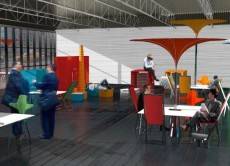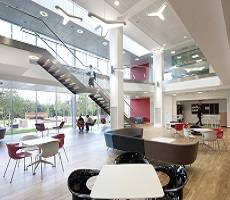November 13, 2013
Workplace Week highlights the changing shape of the office
This year’s Workplace Week which took place last week was a great success, with more people participating and more money raised for charity. Across the week, over 500 people took part, visiting innovative workplaces, attending the Workplace Week Convention or going along to one of the many Fringe events. Workplace Week is organised by Advanced Workplace Associates and supported by CoreNet Global, BCS, RICS, FMA and BIFM. All proceeds go to the Children in Need charity. Around 60 people joined the speakers at the headquarters of PWC on London’s Southbank for the Workplace Week Convention to discuss ‘Driving productivity through the connected organisation.’ The informal atmosphere and roundtable format encouraged participation, with a focus on developments in organisational design, change management and technology.





















December 16, 2013
Book Review: The Emergent Workplace
by Mark Eltringham • Comment, Facilities management, Workplace design
Looking for patterns in the mash
© Columbia Pictures
It’s rather refreshing to see a book or report in which the word ‘Workplace’ in the title is prefaced by ‘Emergent’ rather than something misleading like ‘Tomorrow’s’ or ‘Future’. And so the authors Clark Sept and Paul Heath define their vision of the workplace presented in this slim but engaging book as a thing which is ‘in the process of becoming prominent’ to use the dictionary definition of the word emergent. By using this particular epithet, they are describing the consequences of the various forces that drive today’s workplace rather than lapsing into the fallacies most commonly associated with works of this kind; principally those of either assuming there is an evolution of all offices towards an ultimate model, or that already commonplace factors such as technology which frees us to work anywhere and at any time can in any way be associated with ‘the future’.
(more…)